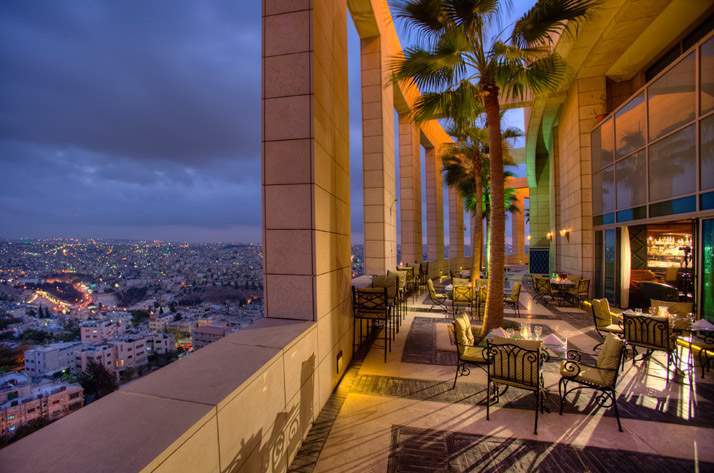AMMAN — Amman has been rapidly growing; this growth process is highlighted through significant buildings and projects that reflect the city’s soul and become its icons. When thinking of these icons,
Le Royal Hotel might be one of the first that comes to mind.
اضافة اعلان
Since the 1980s, Amman witnessed the spurt of several high-rise buildings, such as Al-Burj and The Housing Bank Complex, but neither of them exceeded 90m in height and 22 floors. It is fair to say that these limitations were due to the consideration of the human scale factor.
After six years of construction, Le Royal was completed in 2003 and stood at the tallest building in Amman for almost a decade. Le Royal stands at 110m high with a total of 31 floors and a total developed area of 118,000 sq.m.
Located in Zahran district, near the third circle area, a residential area considered to be occupied by the elites of Amman, the building of Le Royal is home to not only the hotel chain but also to several facilities such as a shopping mall, cinema, commercial offices, ballroom, restaurants, a swimming pool, recreation facilities, and a multi-story car parking.
The physical representation of the building represents the minarets of Samarra, and the hanging gardens of Babylon, represented by the bulky rounded shape opened in the center. At the same time, an external staircase with around 200 stairs ascends eight floors spinning along the exterior walls of the building.
In 2014, an extensive renovation process was carried out to make the hotel more energy sufficient and reduce its carbon print, modernizing 32 elevators to reach the building’s requirements and save energy consumption.
 Le Royal was completed in 2003 and stood at the tallest building in Amman for almost a decade. (Photo: Nayrouz Ali/Jordan News)
Le Royal was completed in 2003 and stood at the tallest building in Amman for almost a decade. (Photo: Nayrouz Ali/Jordan News)
The design of the building received massive criticism and opposition during and after its construction by many architects who saw it as an imposed design that is alienated from the architectural pattern of the city, describing it as a “large ship in the middle of the city.”
Moreover, the representation of the ninth-century Samarra minaret in Iraq was criticized because it wasn’t relevant to the history, identity, or architecture of Amman.
Urban planners also opposed its large footprint and were concerned about the congestion it would cause in the residential neighborhood. Due to the fact that it was primarily intended to be visible from all corners of the city, Le Royal stood with a large podium of over 45m in height.
According to Greater Amman Municipality’s new strategy report in 2007, Le Royal had a negative impact on the urban fabric and architectural identity of Amman and was expected to damage nearby infrastructure and transportation systems.
However, despite the criticism, Le Royal managed to become a monumental building that adds to the city character, the pictures of it lightened with different colors at night are all over the internet posted by residents with loving captions not just towards the building but using it as a token for the city as a whole.
Once considered the tallest building in the city for a decade, it is fair to say it played a huge role in creating the city’s image and launched a race to build higher and higher skyscrapers.
Read more
National






